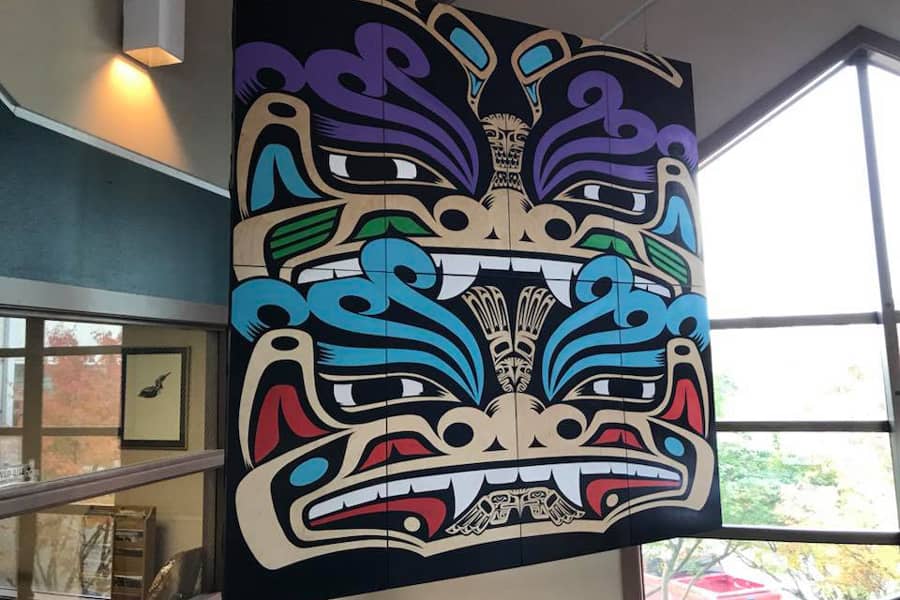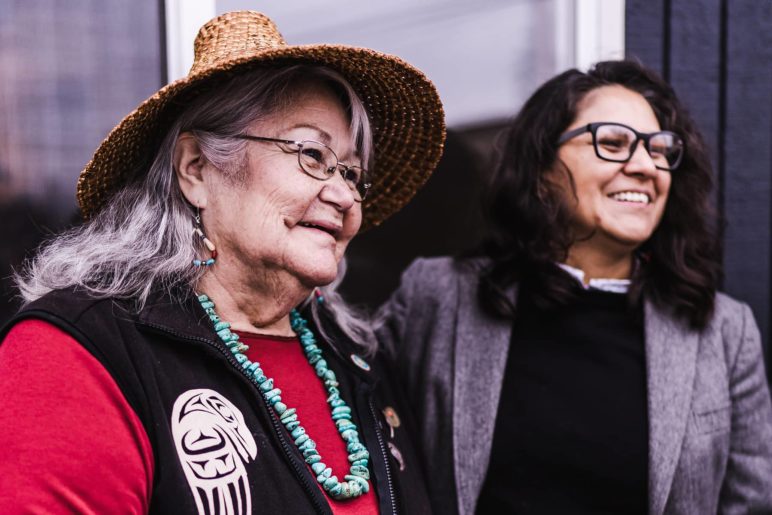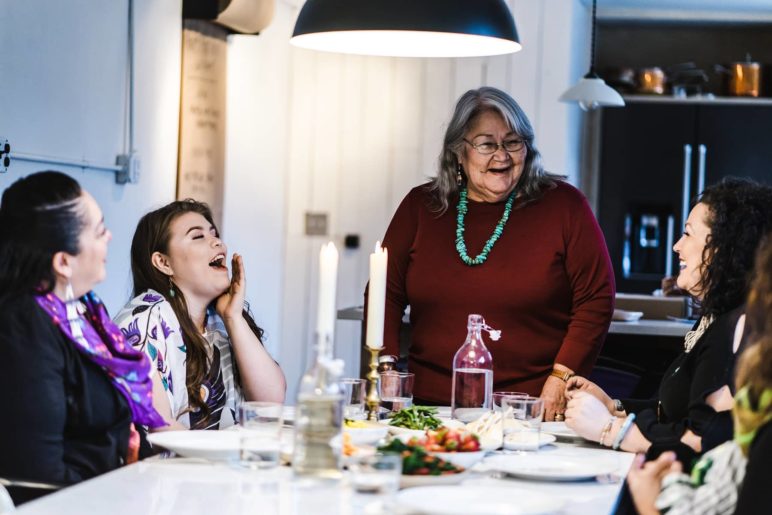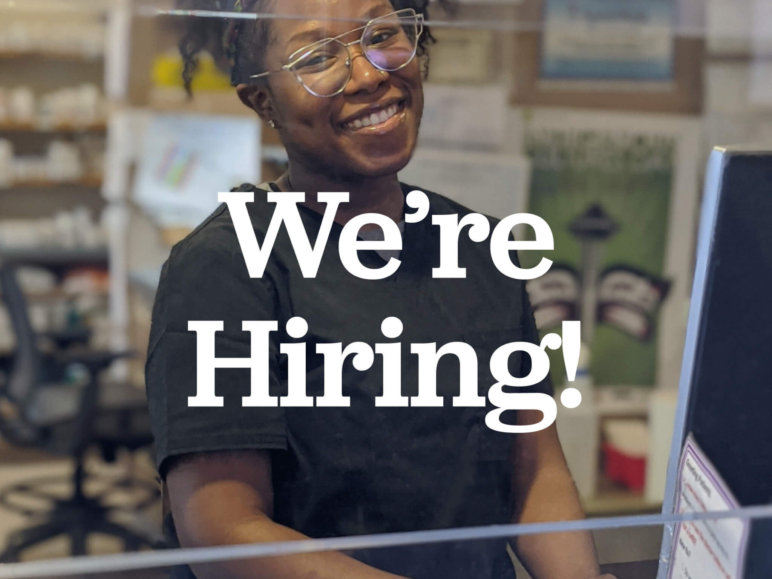The growth of Seattle Indian Health Board’s staff, programs, and services has created the need for upgrades and expansions to our building, the Leschi Center. In 2022, we will begin renovations to our main clinic and offices in Seattle’s International District. The new design of our building will provide seamless care for our relatives and more opportunities for our community.

We Need Your Support
We have begun raising $46.2 million to renovate our building. Your support will allow us to be the best community health clinic for American Indian and Alaska Native people and the employer of choice for culturally attuned health professionals.
Creating a Space for Our Relatives and Community
More than 30 years ago, the Leschi Center was constructed on 1.53 acres of land in Seattle’s International District. Today, the 60,080 square foot building has a two-level medical clinic in its north wing and executive offices, Urban Indian Health Institute, administrative offices, and community services in the two levels of its south wing.
Features of Our New Facility
- Collaborative and holistic spaces designed to improve experiences for relatives and providers, address the unique health needs of the American Indian and Alaska Native population, and lower health care costs.
- Integrated care spaces to address behavioral health needs, such as patient rooms outfitted for telemedicine and group space for mental health and chemical dependency services.
- Community gathering space for American Indian and Alaska Native cultural events, ceremonies, and traditional gatherings.
- 100 units of low-income housing to address the disproportionate rates of homelessness among American Indians and Alaska Natives and the rising housing costs in King County.
Community & State Public Benefits
- More patients receiving integrated care: We currently serve 6,000 relatives annually. Clinical improvements will help us serve an additional 4,000 within five years of renovations, increasing our annual visits to approximately 43,000.
- Serving the underserved: In addition to the urban American Indian and Alaska Native population, we also serve vulnerable and low-income residents in King County, which includes school children and youth, elders, pregnant women, and people experiencing homelessness.
- Workforce development: Since 2015, we have grown from 160 to 197 employees in 2019. By the time renovations are complete, we estimate a 42 percent increase in our workforce. In addition, the construction of our building will create 20 new jobs over a three-year span.
- Addressing social determinants of health: Through affordable housing, we will improve current health outcomes and reduce pervasive health disparities experienced by American Indians and Alaska Natives.
Where are we in the Process?
To date, approximately 13 percent ($5.95 million) of our fundraising goal is secured through committed funds and in-kind support. Here are the steps we have taken to get there and what is needed to begin construction.
Phase 1
- COMPLETED: Purchased Leschi Center
- COMPLETED: Conducted feasibility study and completed site inspections and space planning
- COMPLETED: Voted to include additional two floors for low-income housing
- COMPLETED: Entered into partnership with Central Council Tlingit & Haida Indian Tribes of Alaska in execution of housing goal
- COMPLETED: Received $1 million award from the 2015 Building Communities Fund Grant to fund conceptual design work
- COMPLETED: Hired world-renowned architect, Jonpaul Jones, to develop conceptual and schematic design; finalized in 2018
- COMPLETED: Raised $80,000 for capital campaign through board member contributions
- COMPLETED: Set aside $1 million in revenue dollars for capital campaign
- IN PROCESS: Received $1 million award from 2019-2021 Capital Budget Direct Appropriation
- IN PROCESS: Outreach and fundraising with government and private donors
- IN PROCESS: Public launch of capital campaign
Phase 2
When $30.9 million is secured, renovations and expansion of our clinic and offices will begin.
Phase 3
When $46.2 million is secured, construction for an additional two floors with 100 units of low-income housing will begin.
Why Now?
Our future facility represents the culmination of our hard work over the past 50 years as an organization dedicated to the health and well-being of urban American Indian and Alaska Native people.
Since 2015, Seattle Indian Health Board’s patient base has grown by 23 percent, serving approximately 6,000 patients annually; staff has grown by 30 percent, nearing 200 employees; and the annual operating budget has increased by 40 percent to more than $20 million.
In recent years, we began running out of physical space, so we got creative. We knocked down walls, our Traditional Indian Medicine Healers began house calls, our dental team began providing services through a mobile dental clinic across King County, and we began providing medical services to relatives through a partnership with Chief Seattle Club. We have plans to continue expanding services through a new tribal partnership with Cowlitz Tribal Health Services.
We are doing everything possible to continue to meet the growing needs and requests of our relatives, and we will be able to fulfill those by creating this space for our community.
Design from a world-renowned architect
World-renowned architect, Jonpaul Jones of Jones & Jones Architects and Landscape Architects , finalized the blueprints for Seattle Indian Health Board’s new building in 2018.
Jones’ design philosophy emerged from his Cherokee-Choctaw ancestors, which connects him to the natural world, animal world, spirit world, and human world.
He has led the design of numerous cultural centers and museums with tribes spanning the North American continent, as well as lead design for the National Museum of the American Indian in Washington D.C.
A Fellow in the American Institute of Architects, his designs have won a stream of local and national awards. In 2006, Jones received the AIA Seattle Medal, conferred by the Seattle Chapter of the American Institute of Architects, for his leadership in design. He was also the recipient of the 2006 Executive Excellence Award from the American Indian Science and Engineering Society (AISES).
In 2005, Jones received the University of Oregon Distinguished Service Award from his alma mater for “creating places that incorporate both the practical and the spiritual and for heightening human sensitivity to cultural and environmental issues.”


